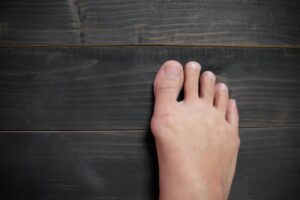6 Risk Factors for Flat Feet

Your feet work extremely hard to carry your body from place to place, and when that causes pain, it might be that a structural abnormality makes this task more difficult. If your feet, ankles, legs, hips, and lower back chronically hurt, it might be that you suffer from a condition known as flat feet.
When you have flat feet, you not only might experience severe pain, you’re at risk of developing more serious problems down the line. Podiatrists Ryan Golub, DPM, and Zachary Flynn, DPM, AACFAS, from Arizona Foot Health in Phoenix, Arizona, explain six reasons you might be at higher risk for flat feet.
Understanding flat feet
People with flat feet have a foot that is completely or nearly flat when they stand. This differs from a typical foot, which has an arch in the middle that doesn’t reach the ground.
Flat feet don’t always cause an issue, but over time, they can cause your feet and ankles to move in unusual ways that cause symptoms. This includes pain throughout your feet, ankles, and lower body.
Over time, flat feet increase your odds of developing conditions, such as arthritis, bone spurs, bunions, and shin splints.
Risk factors for flat feet
Certain risk factors make you more likely to develop flat feet. These are six of the most common ones.
1. Genetics
You’re most likely to have flat feet if it’s in your genes. If other close family members have flat feet, you’re more likely to have them your entire life or develop them when you’re older.
Babies and young children typically have flat feet while their feet are still forming, which later develop into arches. But if you have an inherited tendency to flat feet, your feet remain flat and never form arches.
2. Injuries
When you sustain injuries as an older child or adult, they can cause your feet to malform into flat feet during the healing process. Injuries that put you at risk include broken bones in the feet and other foot and ankle conditions that wear down the posterior tibial tendon that helps support your arches.
3. Aging
As you get older, your posterior tibial tendon wears down more. The aging process means your arches are more likely to turn into flat feet after age 40.
4. Obesity
Carrying extra weight puts more stress on your feet because you carry a heavier load every time you stand up. This can cause additional strain on your feet, increasing your odds of developing flat feet.
5. Muscular diseases
Any medical conditions that cause your muscles to be weaker increase your odds of developing flat feet. Examples of these conditions include muscular dystrophy and spina bifida.
6. Other medical conditions
Adults with other kinds of medical conditions also appear to be more likely to acquire flat feet. Your risk increases if you have rheumatoid arthritis, diabetes, or high blood pressure.
Flat feet symptoms
If you have any risk factors for flat feet, pay careful attention to the symptoms of flat feet, so you can get them treated as quickly as possible. These include:
- Arch pain
- Ankle pain
- Lower body pain
- Leg cramps
- Changes in your gait when walking
If our podiatrists diagnose you with flat feet, they offer a number of treatments that relieve pain and fix your alignment, ranging from conservative measures all the way to reconstructive surgery.
For relief from the complications associated with flat feet, contact our team for treatment and support.
You Might Also Enjoy...
The Achilles Heel
Given Arizona’s climate, patients are able to remain active year round. It’s why we all chose to live here. But…
Alleviating Back Pain and Other Benefits of Custom Orthotics You Didn’t Know About
Would you ever imagine that custom foot orthotics could improve your quality of life? That’s what many people say after…
9 Helpful Tips to Prepare Your Home Before Bunion Surgery
When moderate interventions, such as wearing wider shoes or using pads in your shoes, fail to ease your bunion pain…
When Should You Go to the Doctor for an Ingrown Toenail?
In most cases, you can nurse an ingrown toenail at home with over-the-counter pain medication, topical antibiotic creams, and soaking…
6 Home Exercises to Keep Your Ankles Strong
Ankles that feel wobbly and weak are vulnerable to injury. If you play sports, run, jump, or just walk often,…
Is Surgery My Best Option For Treating Bunions?
You have a bunion and it isn’t pretty, but if your bunion is small enough, or doesn’t hurt, you may…






